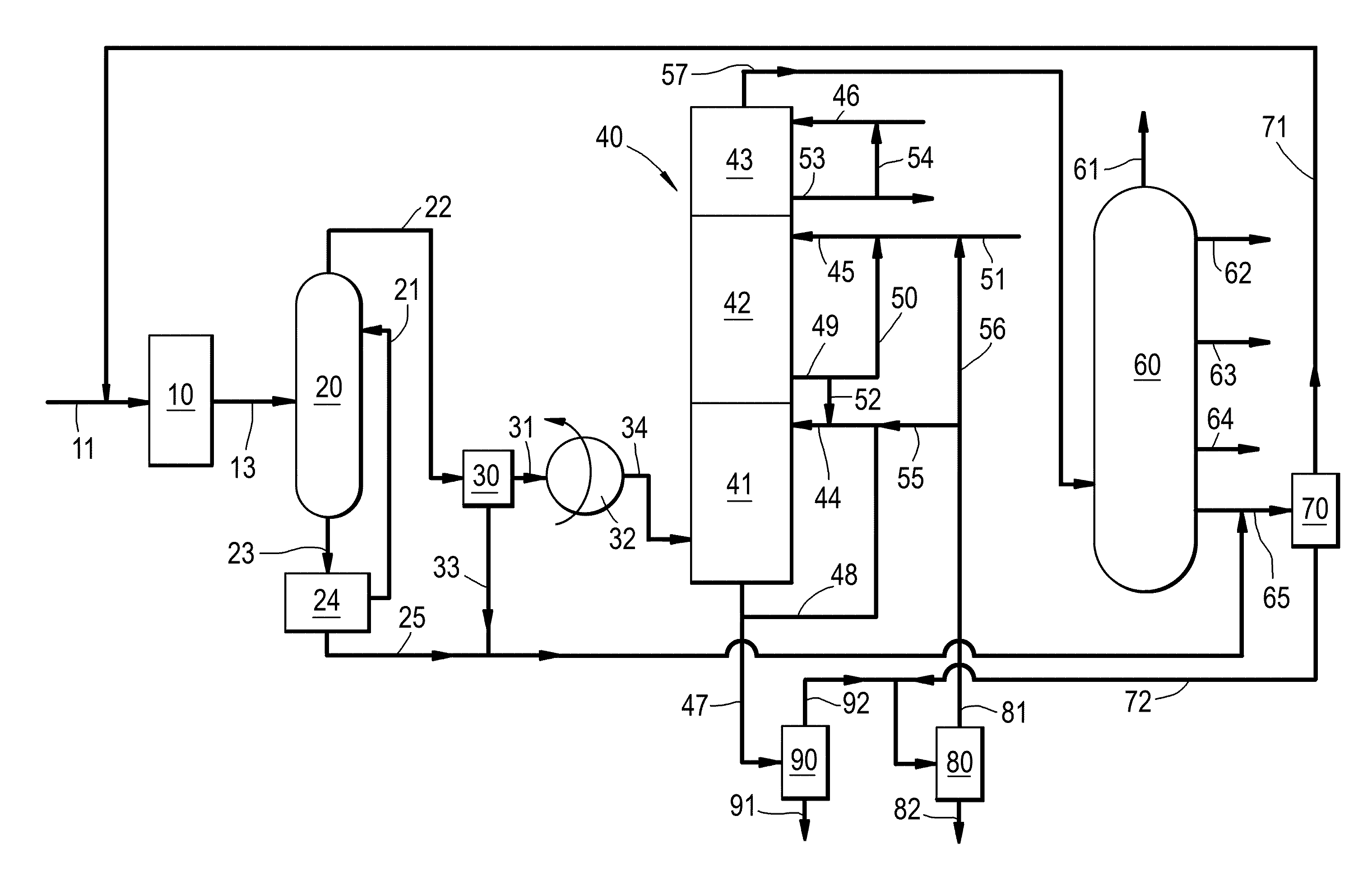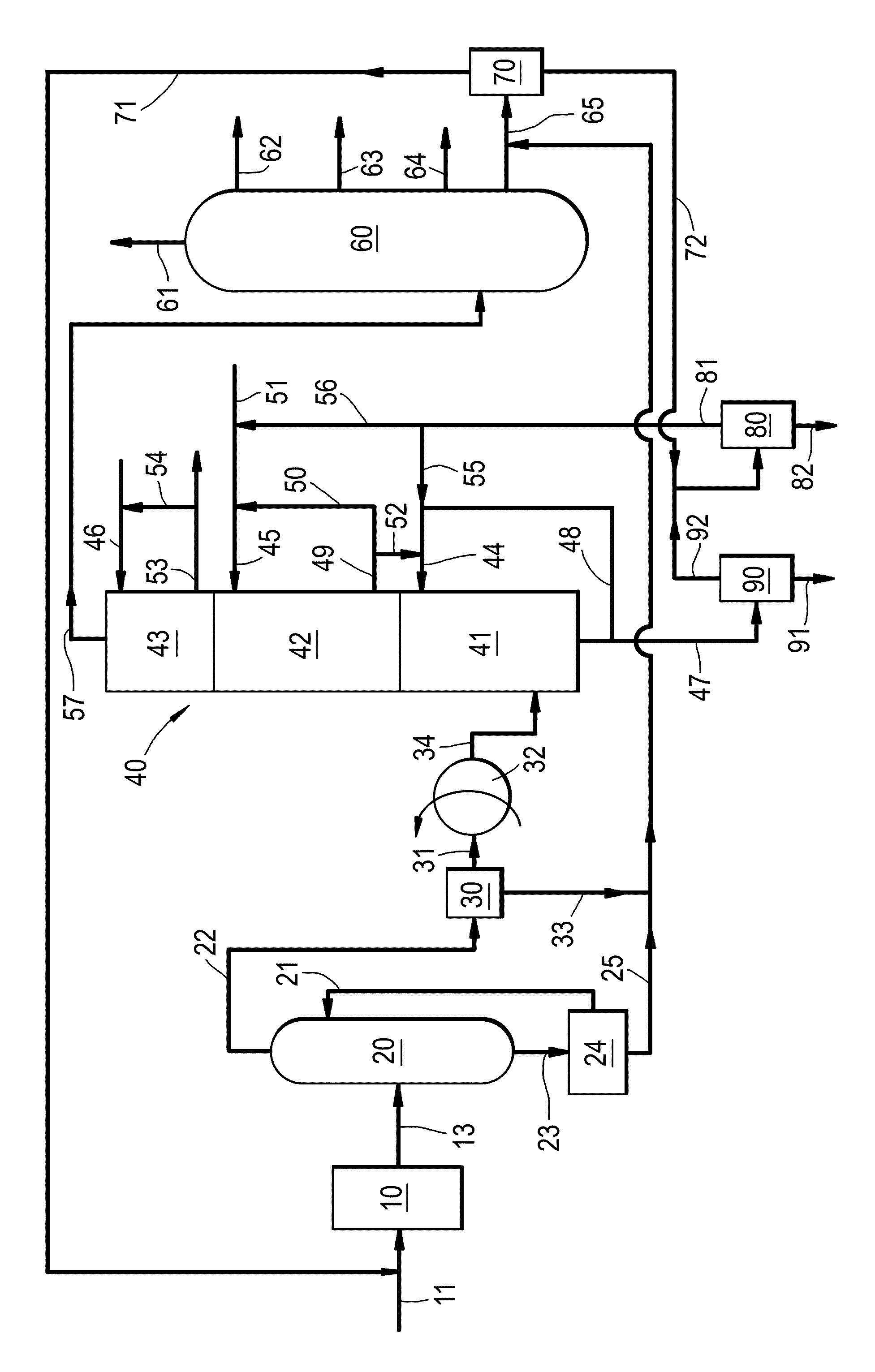Process for the preparation of an olefinic product from an oxygenate
- Summary
- Abstract
- Description
- Claims
- Application Information
AI Technical Summary
Benefits of technology
Problems solved by technology
Method used
Image
Examples
Embodiment Construction
[0014]In the process according to the invention, an olefinic product comprising ethylene and / or propylene is prepared by first converting the oxygenate into olefins in a so-called oxygenate conversion step (step a)) to produce an effluent comprising olefins, water, carbon dioxide and carbonyl compounds including C2+ aldehyde and / or ketone. In step b), water is separated from the oxygenate conversion effluent to obtain a water-depleted gaseous oxygenate conversion effluent comprising olefins, carbon dioxide and C2+ aldehyde and / or ketone. In subsequent step c), the water-depleted gaseous effluent obtained in step b) is compressed to obtain a compressed gaseous stream comprising olefins, carbon dioxide and C2+ aldehyde and / or ketone. In step d), carbon dioxide and other acids are separated from the compressed gaseous stream by subjecting the compressed gaseous stream to a caustic wash treatment, wherein the gaseous stream is countercurrently contacted with a caustic solution. In order...
PUM
| Property | Measurement | Unit |
|---|---|---|
| Temperature | aaaaa | aaaaa |
| Temperature | aaaaa | aaaaa |
| Temperature | aaaaa | aaaaa |
Abstract
Description
Claims
Application Information
 Login to View More
Login to View More - R&D Engineer
- R&D Manager
- IP Professional
- Industry Leading Data Capabilities
- Powerful AI technology
- Patent DNA Extraction
Browse by: Latest US Patents, China's latest patents, Technical Efficacy Thesaurus, Application Domain, Technology Topic, Popular Technical Reports.
© 2024 PatSnap. All rights reserved.Legal|Privacy policy|Modern Slavery Act Transparency Statement|Sitemap|About US| Contact US: help@patsnap.com









